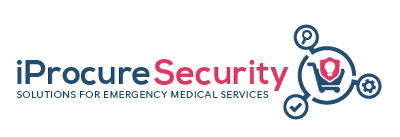480Terms
Help to improve our database
We are continuously collecting common terms used by the Emergency Medical Services practitioners across Europe. Help us improve our content and fill out the online form. If you are not able to find what you are looking for, please let us know by sending us a message through our contact page.
Your feedback is important for us and it will be fed into our Database for the EMS glossary.
Add new EMS termTo unify the communication and knowledge exchange between the emergency medical teams across Europe iProcureSecurity seeks to translate the identified EMS terms in all consortium languages.
That is why the project encourages everyone willing to contribute, to suggest and add missing terminology translation.
Add new translationiProcureSecurity Glossary
Part of an emergency management system includes the management organization, a management procedure and the management resources. It has to ensure clarity at all times during the operation about which actions are being carried out by whom, how, when and where.
PCP concerns the phase before commercial exploitation, namely the procurement of R&D. PCP is used to drive technological innovation up to the development of a limited batch of first products or services in the form of a test series. The subsequent commercialisation of the results of the PCP generated by the R&D providers in the PCP is up to the R&D providers themselves (for an unlimited period of time if compliant with the PCP conditions or until the call-back clause is called for). Commercial exploitation of the PCP results by R&D providers that participate in the PCP can be defined as marketing a commercial application of the results directly by the R&D provider or by any of its potential subcontractors or licensees. This can include marketing a commercial application (through direct sales or licensing or transfer of ownership) of all types of results from the PCP (including information, data, IPRs, products/services/processes resulting from the PCP). Commercialisation of products/services resulting from the PCP covers the production, distribution, marketing, sales and customer support required to achieve commercial success. As a strategy, commercialisation of products/services requires developing a marketing plan, determining how the product or service will be supplied to the market and anticipating and managing barriers to success. The public procurer may support the commercialisation process by launching a PPI procurement after the PCP to purchase the results of the PCP, in particular to deploy products/services resulting from the PCP. If the PPI covers only the purchase of the limited set of prototypes or first test products/services developed during the PCP, then the PPI procurement can be limited to the R&D providers that participate in the PCP on condition that the PCP procurement was open not only to bidders from the 28 Member States, EEA and countries in the EU Neighbourhood policy but also to all bidders from WTO signatory countries. According to the EU and WTO legal framework, a PPI procurement to buy commercial volumes of final end-products may not be reserved to (one of) the R&D providers that participated in the PCP and has to be open beyond the 28 Member States, EEA and countries in the EU Neighbourhood policy also bidders from all WTO signatory countries for all types of purchases covered by the WTO GPA
The European Union developed CPV codes with a purpose to help procurement identify, consistently and correctly find tenders that are of interest by using a standardized vocabulary. The codes generically describes products or services
A practical community of EMS practitioners and other stakeholders from the EMS field who face similar tasks and challenges and want to learn from each other.
Refers to the competitive approach used in PCP by procurers to buy R&D from several competing R&D providers in parallel to compare and identify the best value for money solutions on the market to address the PCP challenge. The R&D is also split in phases (solution design, prototyping, original development and validation / testing of the first products). The number of competing R&D providers is reduced after each PCP phase subsequent to intermediate evaluations. The phased approach reduces the investment risk for the public procurer, facilitates the participation of smaller innovative companies (SMEs) and rewards the most competitive solutions. Evidence also shows that competitive development in phases that is clearly separated from later deployment contracts, generates significant quality improvements and on average 20% cost reduction in first products for procurers
Computer-Assisted Dispatch, is a method of dispatching emergency services assisted by computer.
Training based on software, also known as eLearning which automates educational activities and brings EMS practitioners for example out of the classroom and into a more flexible and engaging online environment.
Term used to describe any technology that enables computers to interact with telephones. This technology is primarily used in EMCCs and is often used to describe desktop interactions that improve human agents' productivity.
Computer-aided drone dispatch is a way of sending off drones to specific destination assisted by a computer.
Well-defined procedure that allows a computer to solve a problem.

